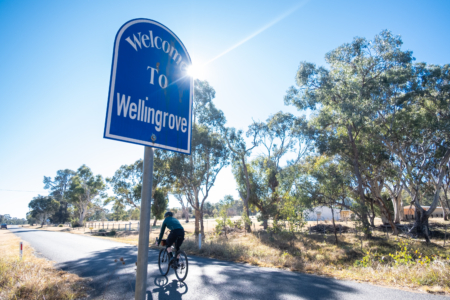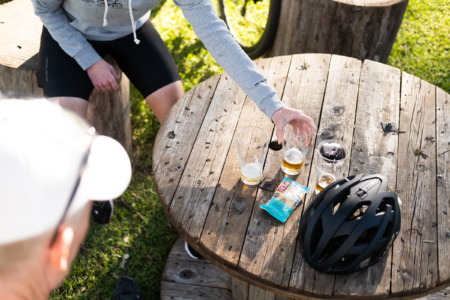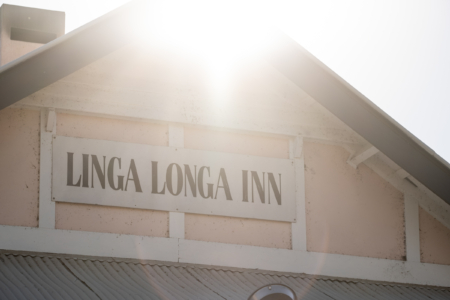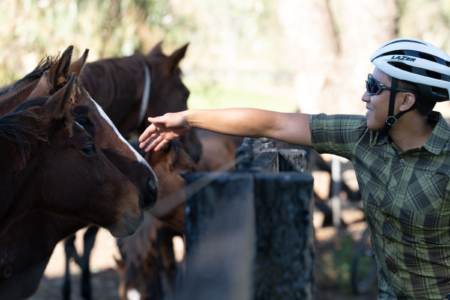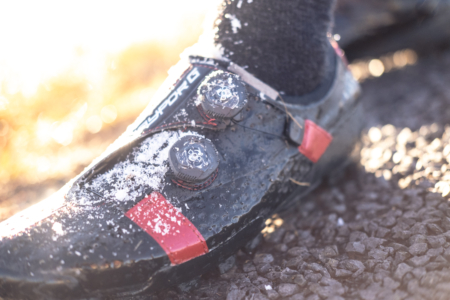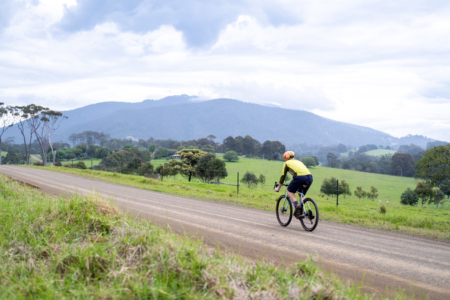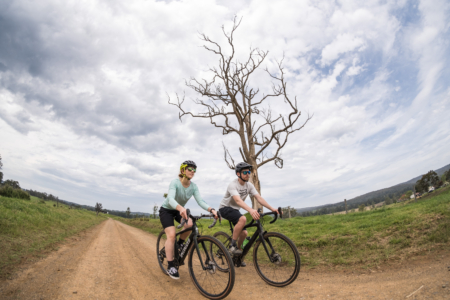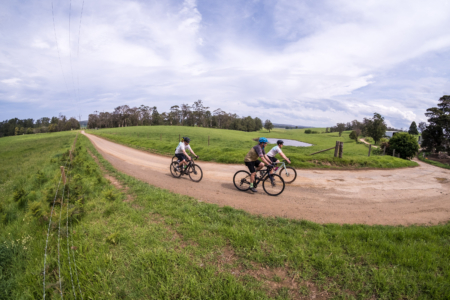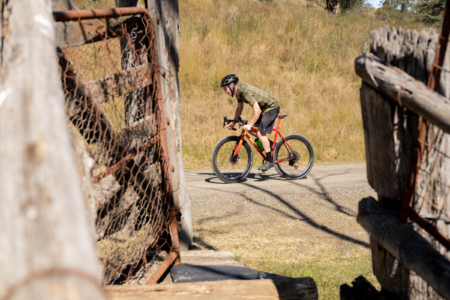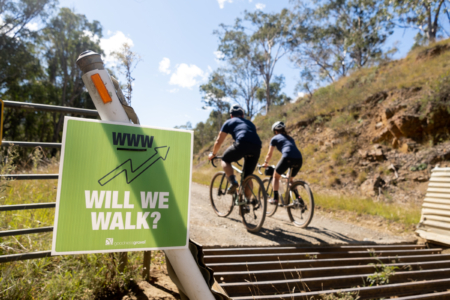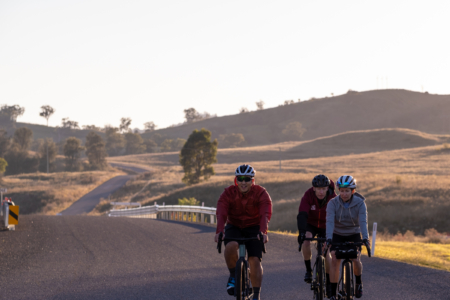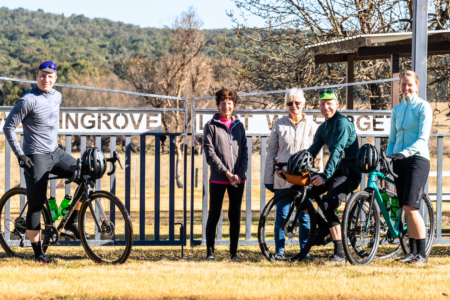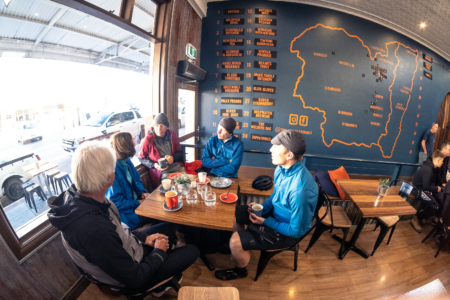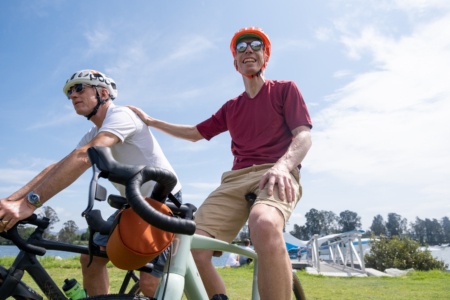Hitting Mogo, Glen Innes and Gundy, goodnessgravel 2024 calendar is underway, exploring the best country roads NSW has to offer. And there is a new Oranged-tinted addition to the series!
Born out of trying to get folks out of the city and exploring back roads, goodnessgravel has evolved into a four-event series taking in a quartet of country towns that may not otherwise be on your radar. But with the gravel riding they have to offer, they absolutely should be.
We caught up with Mr goodnessgravel himself, Will Levy, to find out more about the series and get the inside scoop on the courses.
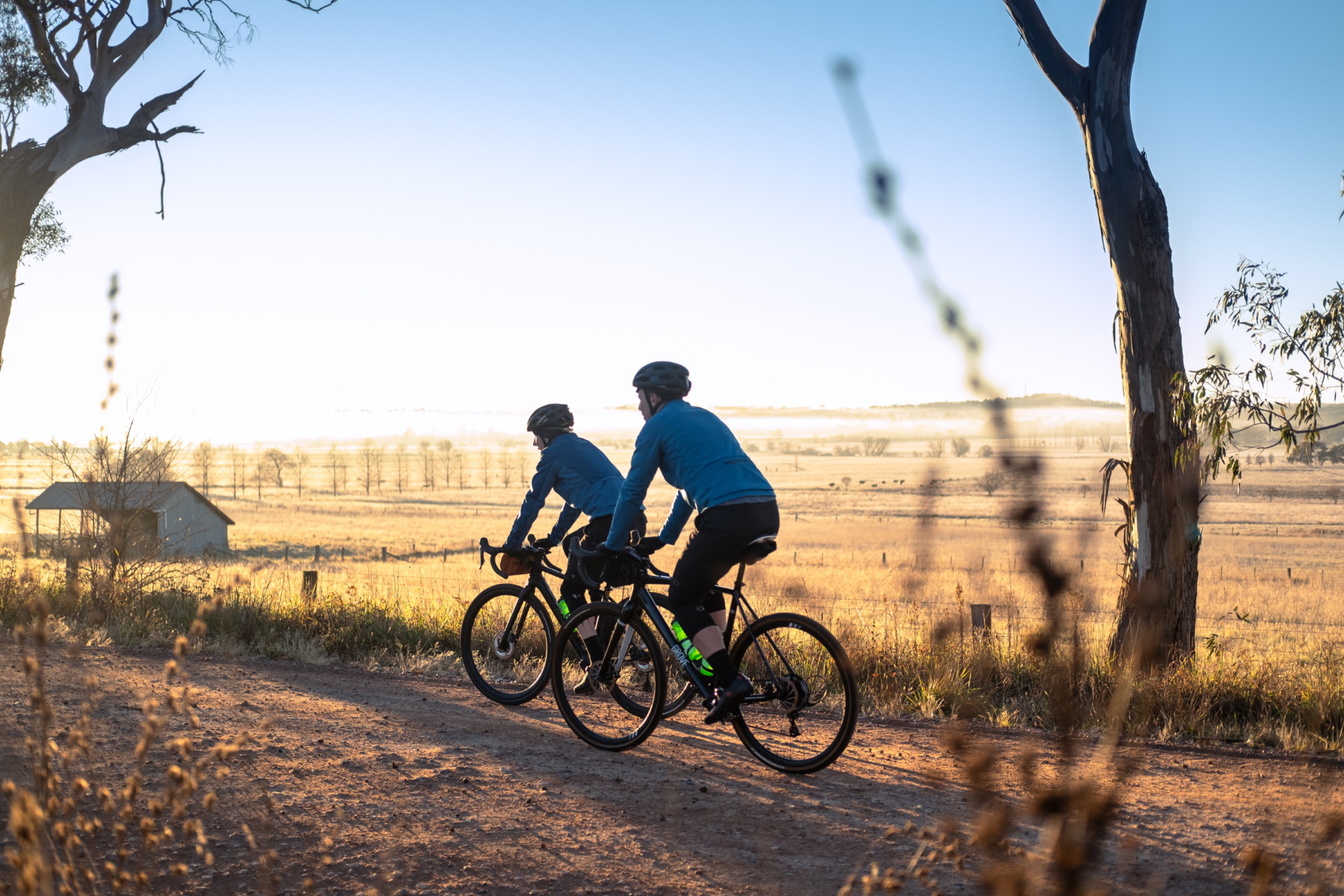
What is goodnessgravel?
If Will Levy’s name looks familiar, you may know him from twowheeltours, which has been running Euro cycling tours, including taking folks to the Haute Route — you know, the event that set the stage for the Netflix doco Icarus — for over a decade.
Then Covid hit and stopped international and most domestic travel.
“We would spend a lot of time overseas, and then Covid came along, and we thought, alright, how long is this going to last? Nobody really knows,” says Levy. “I wasn’t going to go back to teaching, so we had to come up with something else.”
As it happens, Levy used to be in charge of the Bowral Classic, a Gran Fondo that attracts about 3,000 people to the Southern Highlands year after year. Running an event of that scale is basically a PhD in dealing with permits, councils, volunteers and the like. Looking abroad, gravel is exploding with no signs of slowing down, so Levy started putting in the groundwork to shine a light on the bulk kilometres of remarkable unpaved roads around NSW.
After doing an audit of the gravel riding opportunities for the Eurobodalla Shire, the council said, ‘if you fill out this form, you can get a grant to put on an event.’ And so goodnessgravel Mogo was born.
“We’re trying to get people to explore and get out of regular riding environments and ride in rural regions and have a great experience,” he says.
And now with a new offering in the Central Tablelands, it makes it that much easier to dip your toe into gravel, or dive in head first.
“Not everyone lives near Orange, or Mogo, Gundy or Glen Innes, so it’s nice to be able to offer a range of locations and get more riders on board,” he says.

Similar to the Beechworth Granite Classic, goodnessgravel is not a race, there are no awards for finishing first, and there is no clock running.
“The first one back gets a Lindt ball, but then so does everyone else when they finish. You’ll get a free beer, a sausage sandwich and another cold drink,” says Levy.
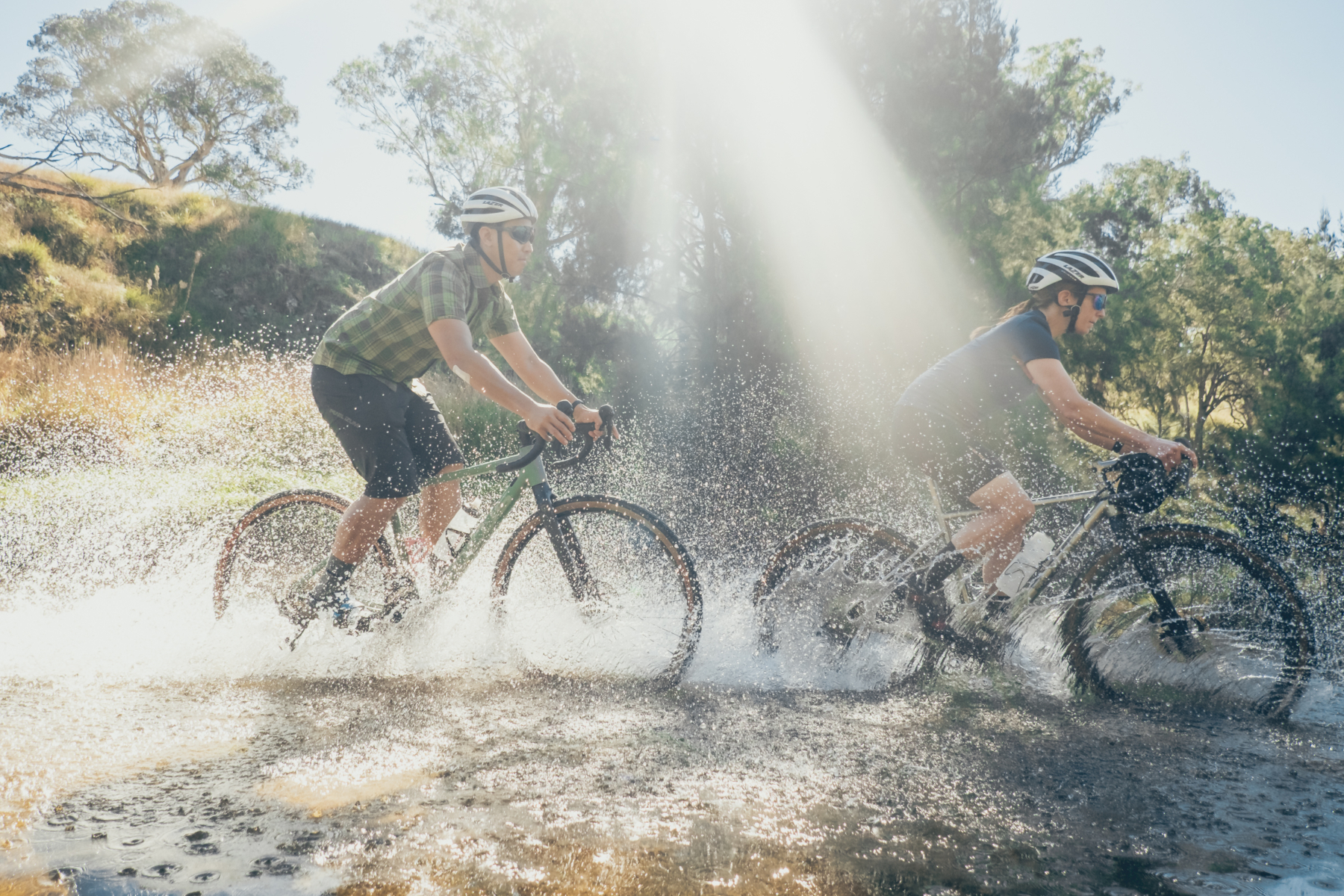
How hard are these events?
These events are designed to be a challenge, with the big loops at all four coming in about 130km in length, you won’t want to come straight off the couch. Being mostly on unpaved roads, conditions of the surface you’re riding on can vary drastically, and the routes are anything but flat.
The loops are adventurous, taking in water crossings and even short sections of 4WD track and fire roads, but they aren’t designed to be a sufferfest for the sake of being a sufferfest.
“A lot of it, the road surface is better than Military Road in Sydney,” he laughs.
With that, Levy says to leave your road bike at home. The majority of folks ride gravel bikes (82%), but there are still folks who come out on their mountain bikes (18%), and the rest are e-Gravel or e-MTB.
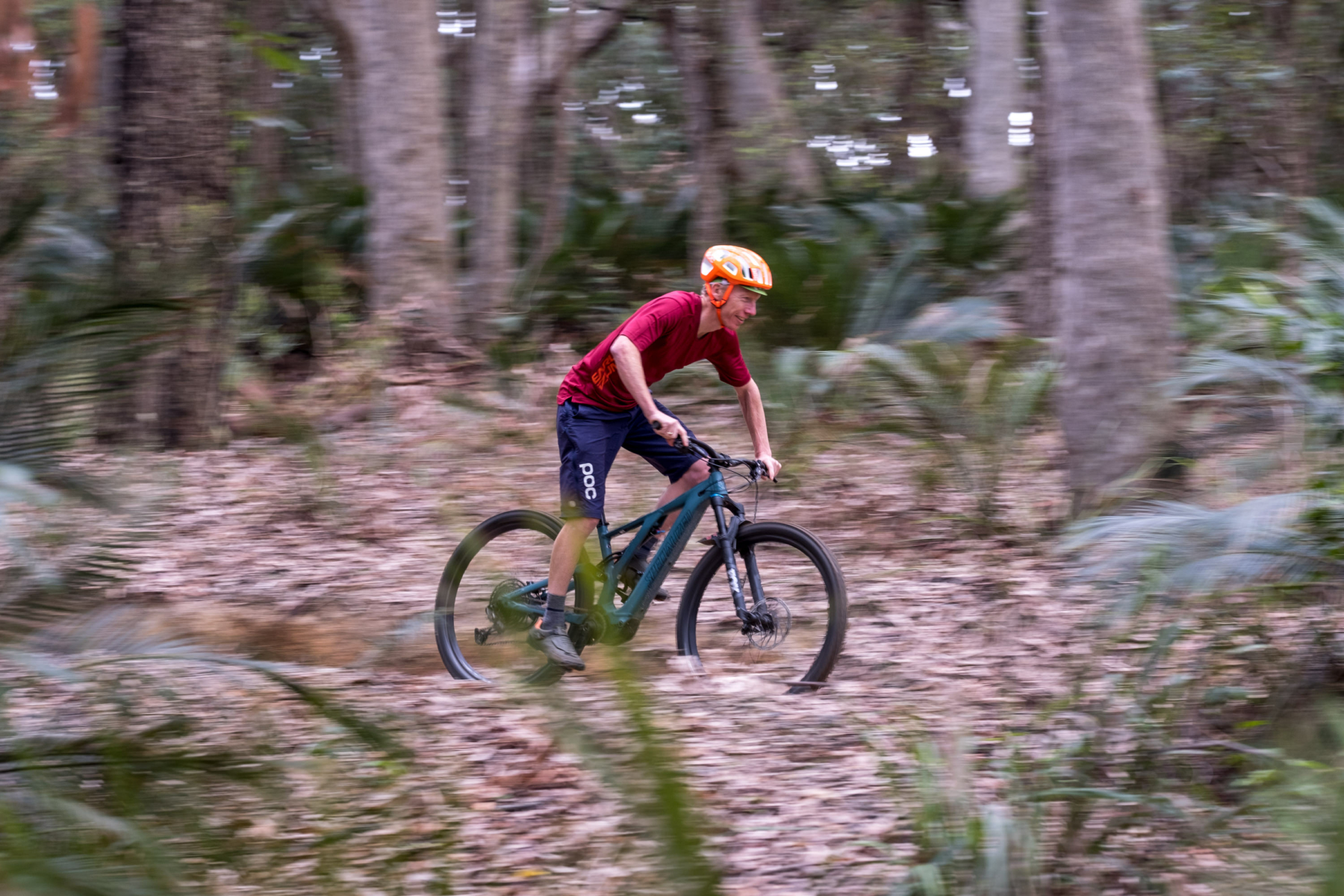
Each event offers a long and a short course, with fully catered aid stations, complete with live music, on-course support, medical and mechanical assistance. When registering, each rider receives a goodness bag with a ‘mankie’ which is a map/hankie plus their hand made rider card. There is a sweep van, however seats are limited, so he warns it should not be treated as a sag wagon.
goodnessgravel Glen Innes | April 13, 2024
According to Levy, the beauty of the Glen Innes event is the remoteness.
“You’d be lucky to see a few cars out there,” he says.
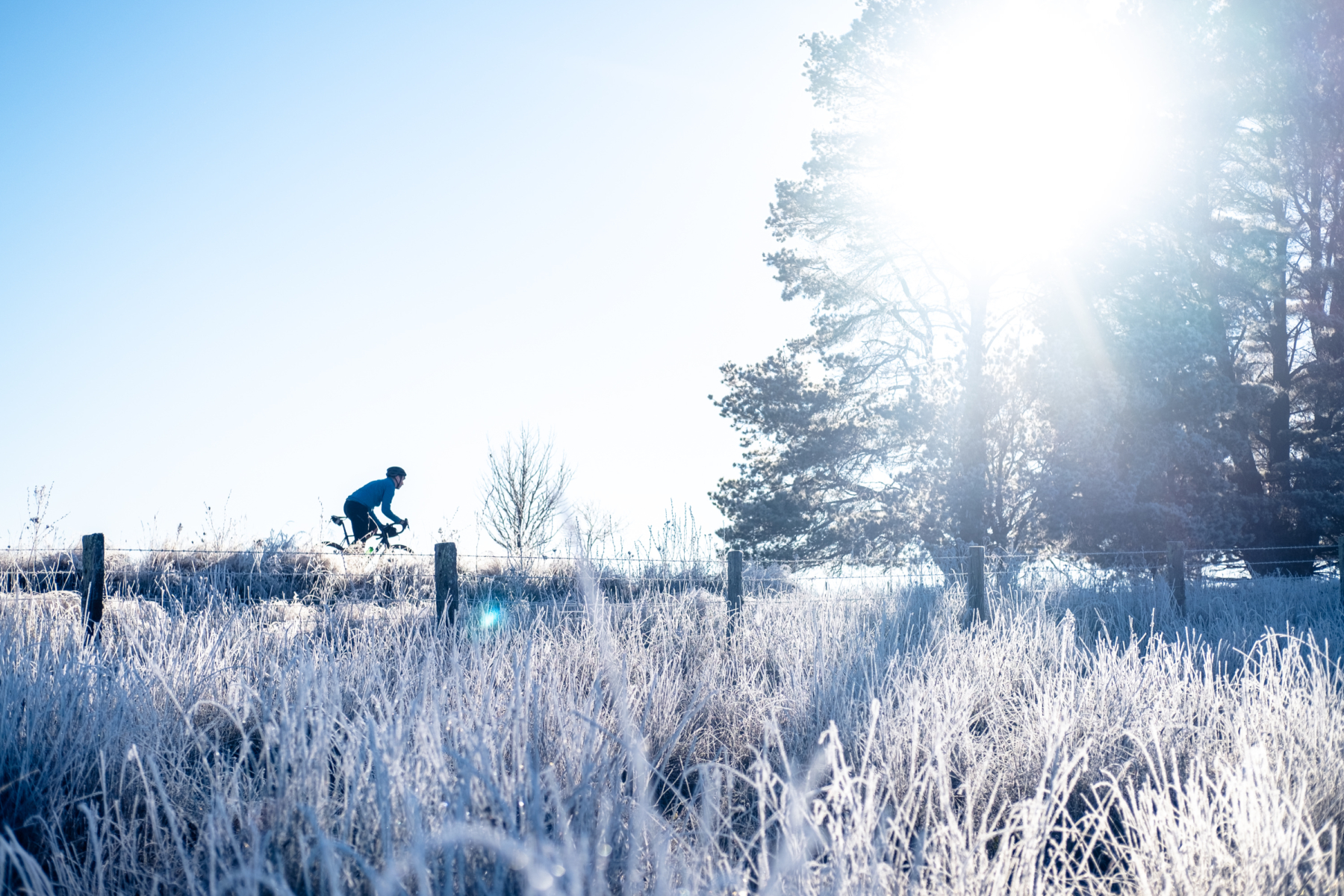
With three courses, the big loop covers 125km with 1,700m of climbing. The medium course is 75km with 1,000m of vertical ascent, and the ‘Piccolo’ option is a 35km loop with 450m of climbing.
Kicking off with a climb up Mt Mitchell Road, which is the most challenging ascent of the day, this slog sees extended sections above a 12% gradient. The tarmac ends about 28 km in — there’s a Rest Stop ‘Lite’ here — and you’ll hit the high point about 1km later, reaching 1259m above sea level.
According to Levy the first quarter of the Glen Innes course is the hardest.
“Then you’re onto Mount Slow, and you go through these huge granite boulders. It’s so unbelievably beautiful,” he says.
From there, the course goes down into an area called Red Range at about 80km in, where you’ll find the second rest stop of the day.
“It’s this tiny little town, with an RFS, a community hall and a public school. There is this guy who raises the best chickens in NSW — I think that might be self-professed. But he runs the community hall.” says Levy.
From there, it’s a flowing descent through Lambs Valley, and back onto the tarmac into Glen Innes.
Check out last year’s goodnessgravel Glen Innes:
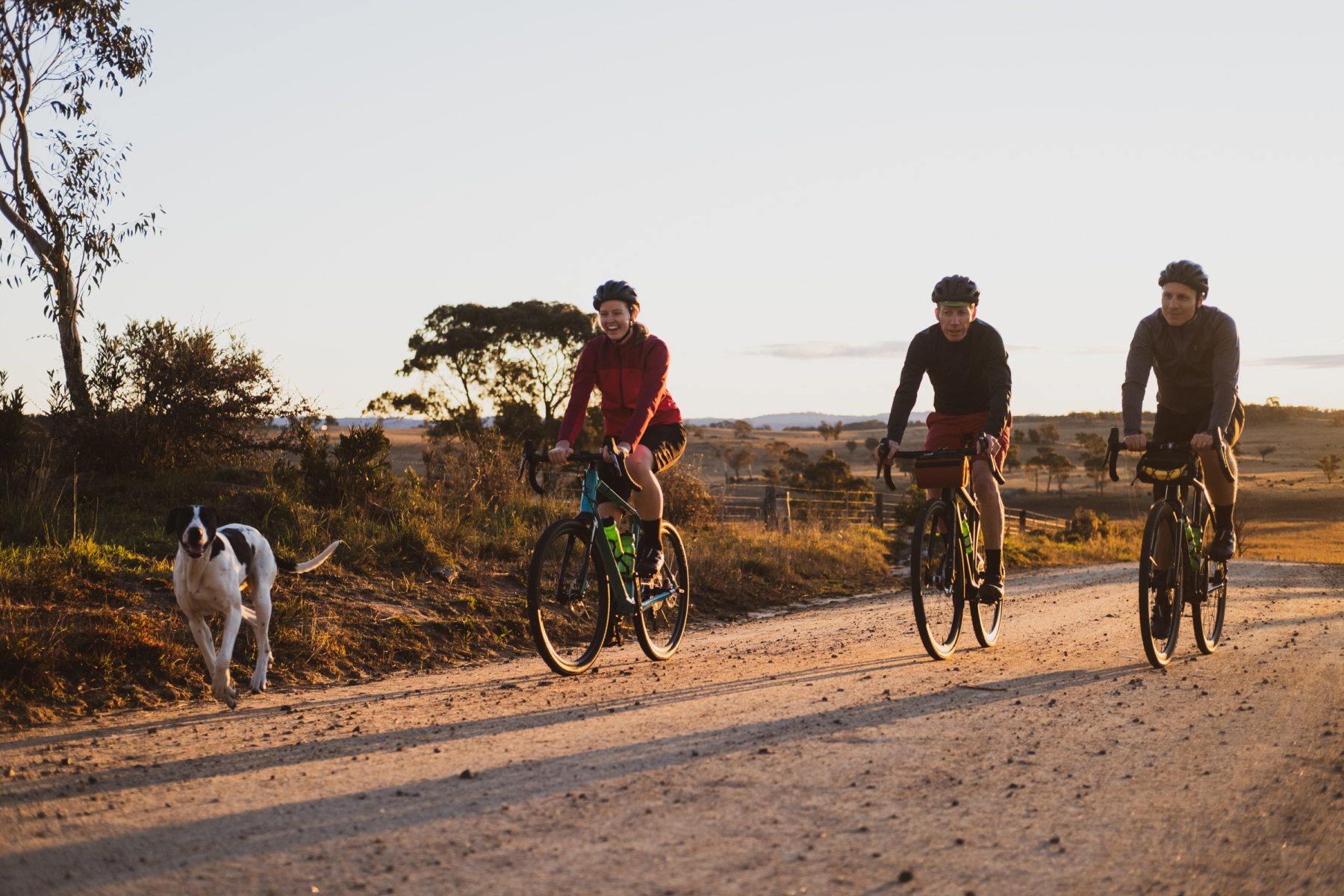
goodnessgravel Mogo, NSW | July 20, 2024
You may already be aware of Mogo because of the massive 155km trail network currently under construction. Eurobodalla Shire is also home to what Levy says is the hardest goodnessgravel event. The long course is 130km with 2,700m of climbing, and the short loop takes in 70km with 1,595m of uphill.
With a figure-eight loop, there is hardly a flat section on this course.
Starting in Mogo the route for a town called Runnyford which has one of the few timber plank bridges that survived the bushfires in 2019.

“It’s something out of Neverland because it’s like 200m long — it’s quite stunning. When the fires came through, I think they lost 80 of these bridges because most of them are wood, but this one survived,” says Levy.
Once you cross the Buckenbowra River, you climb up to the first rest stop at Nelligen, 38.5km into the day.
“Then you ride some of what I think is Australia’s best gravel through the state parks, Mogo State Forest,” says Levy.
After what’s called the Big Bit climb, it’s onto the Old Princess Highway, which is unpaved and extraordinarily narrow. It’s wild to think that this one was once the main thoroughfare of the South Coast because it would be treacherous by car.
At about 75km in, you hit the Clyde River, where you’re met with a sizeable 100m long shallow crossing.
“At worst, the deepest it is, is up to your shin, so some people ride across, and others take their shoes off and walk. Not being a race, there’s no pressure,” says Levy.
Once you have a chance to dry out, this section of the course is the calm before the storm — the crux of the day, Egan’s Rough Stuff.

“It’s the most idyllic road. You go past this amazing farm, and then this beautiful lake, and then all of a sudden, it’s not so beautiful anymore because you hit the 4WD track. It’s probably only 1km, and then straight into a steep climb for a very short period,” says Levy.
Once you’ve made it up, and over the top, the hard work is done, and it’s a cruisy, rolling — but not flat — pedal back to Mogo.
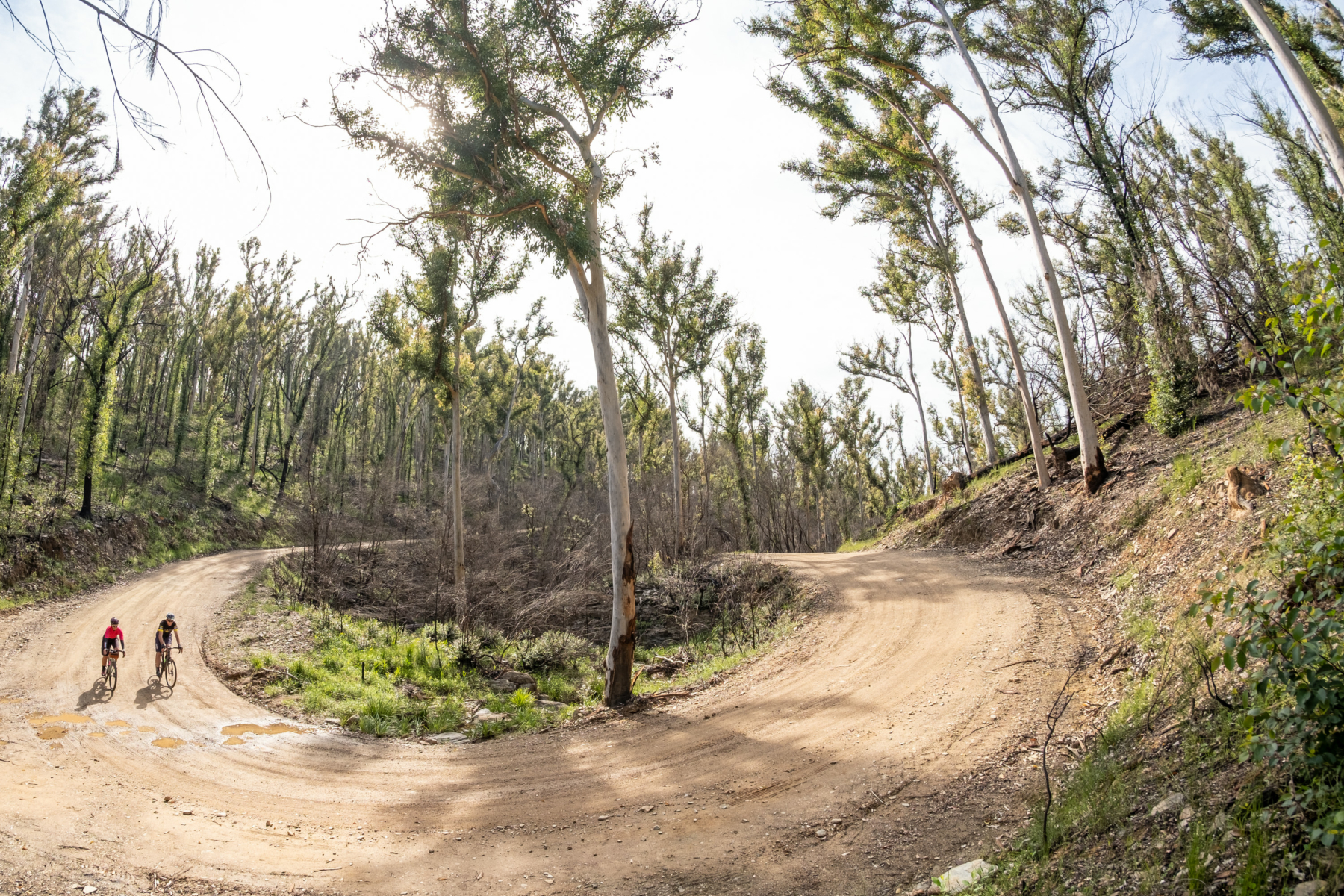
Want to see what goodnessgravel Mogo was like last year? Read more below:
goodnessgravel Gundy | September 22, 2024
Touring the Upper Hunter, goodnessgravel Gundy will have a long 135km course which features a whopping 2,700m of ascending. According to Levy’s estimate, riding at 18kph will take 7.5-hours — not for the faint of heart. There’s also a 75km ‘short’ course with 1650m of ascending.
Kicking off with 8km of pounding pavement, you hit gravel and a guided tour of some of the most storied polo (equestrian) farms in the state.

“You’ll go over a lot of cattle grids, and have cows, sheep, and horses all around you — they could be on the road with you,” he says.
Heading into the first rest stop at 43km, there’s a water crossing over Greens Creek, and then the aid station where food, drinks, and a band will be waiting.
“The second rest stop is run by these two older ladies who are literally the most Australian people I’ve ever met. They are the nicest people, and they’re so helpful,” says Levy.
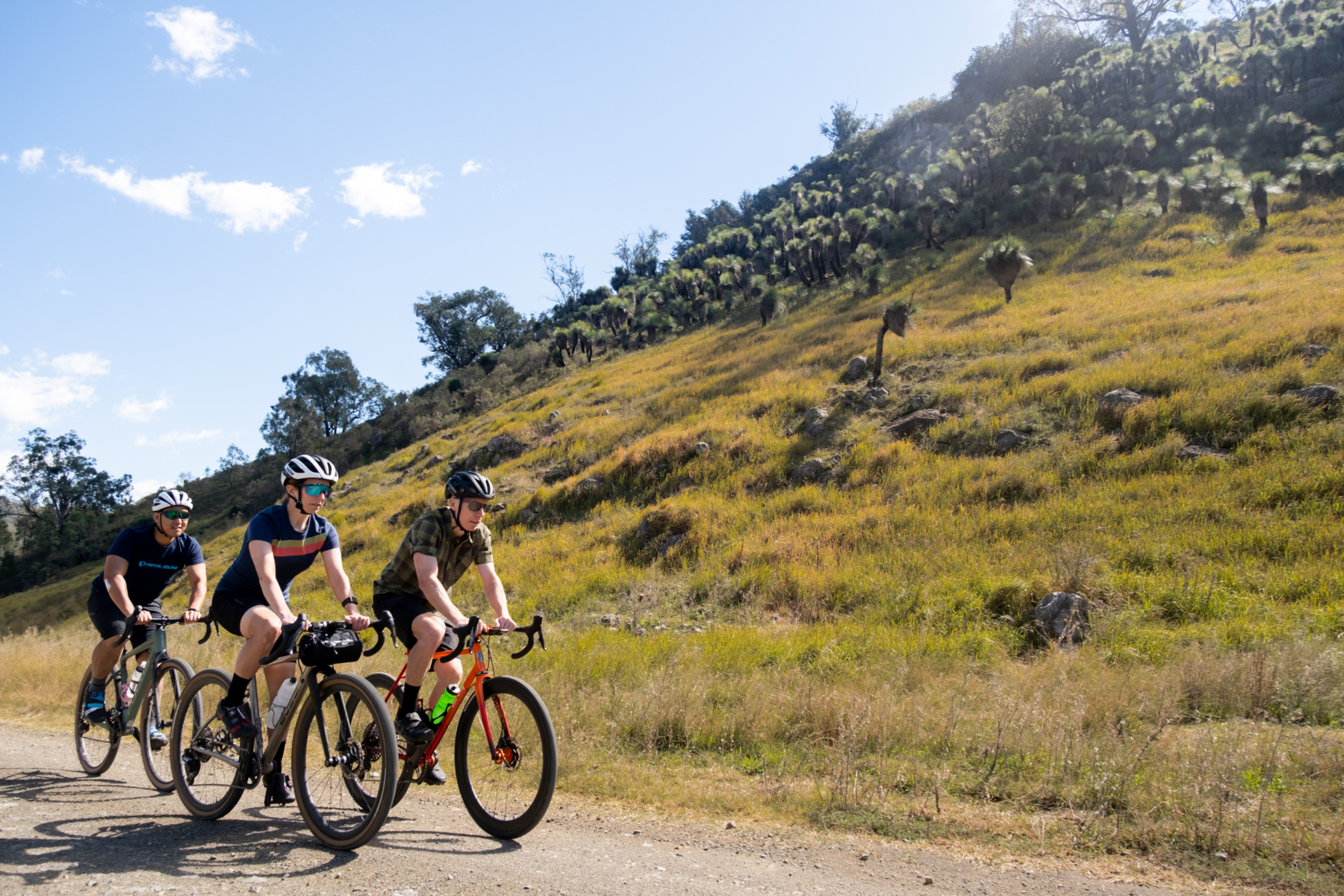
The next section of the course can only be described as a high, a low, and an extreme high. Here you’ll enter the famed grass tree forest.
“You pedal out through Timor, and you go up this hill into the grass trees,” he says. “There’s literally thousands of grass trees along this one road around the Timor Caves area.”
After you’ve scraped your jaw off the ground from the amazement of what you’ve just witnessed, it’s the infamous WWW (Will We Walk) climb. This is a stonking ascent up to Sergeant Gap, where the gradient regularly tips above 10%, winding its way up to 958m above sea level.
“Then there is a fast descent, and the beauty of it from there, it’s almost a 60km flowing descent once you get over the top of Sergeant Gap. You ride from about 60km to about 120km, pretty much all descending from 960m above sea level to about 250m — and there is no one around,” he says.
On the way back, you run through the second aid station at Ellerston, which is also home to the Packer Media empire’s infamous farm. On the way by you’ll catch glimpses of the private golf course — the sand in the bunkers is whiter than what you’ll find in Jervis Bay.
There’s one last uphill surge with under 10km to go before you’re back in Gundy with a Lindt ball, a beer and a sausage sandwich at the Linga Longa Pub. Levy recommends taking advantage of the Gundy weir to cool off tired legs.
Check out all the action from the grass trees at last year’s event:
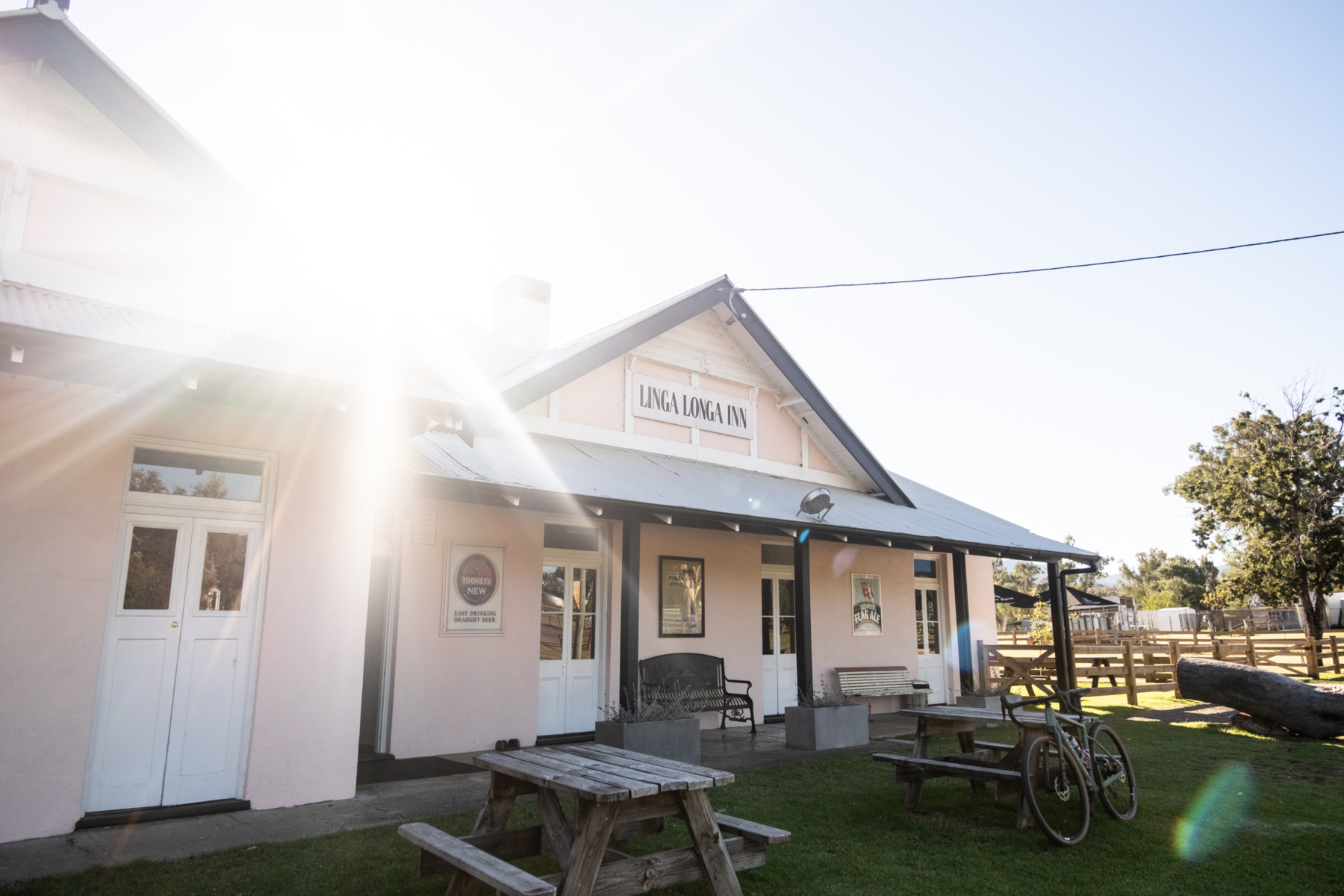
goodnessgravel Orange | March 16, 2024
goodnessgravel Orange has already run this year, check out our recap below
The first event on the goodnessgravel calendar is the new kid on the block sailing the good times ship to Orange, NSW. Best known for its wines, local produce and, of course, the scenery.

goodnessgravel Orange has two courses on offer; a 120km loop with a 2,300m of climbing or a short option that’s 65km with 1,650m.
Levy describes the course as a bit of a Canobolas fest, with the start and finish at Lake Canobolas, and the crux of the day being the gravel ascent up Mount Canobolas.

Both courses first go past the Orange Race Track before heading into Glenwood State Forest where you will start pedalling through the pine forest to the first rest stop at 30km.
After the rest stop is where the two loops diverge, with the short loop headed through Glenwood State Forest — home of the Trail of Awesomeness — while the big loop heads for a little town called Cargo, population 200.
Here you’ll find the second rest stop, and then it’s champagne gravel with a few potential river crossings until you get to Glenwood State Forest.
“You’re on full Australian country gravel roads. It’s big wide open spaces and views forever. It’s quiet little country roads surrounded in gum trees — this section will be fast and is more rolly than hilly,” says Levy.
“From the long course, you come in from the state forest, and you have the mighty Mount Canobolas waiting for you. It’s a big berg of a hill; it’s 1,397m tall, and you’ll be climbing the majority of that on gravel,” he says.
At the top, you’ll have a 360-degree view of the whole area — a great spot to regroup — before you descend the mountain on a paved road to Lake Canobolas, which is open for swimming.
“We’ll have live music again, and people will get a finishers pin when they cross the line — which is in the shape of a heart this year — a sausage sandwich from good people who run the Lakeside Cafe, and a cold drink,” Levy says.
The majority of the route is on well-maintained gravel roads. However, Levy does note that there are a few fire road sections through the state forest. These are active working forests, so they could be a little rough.
goodnessgravel gives back
It doesn’t take long in speaking to Levy to understand he’s very conscious of the impact of what he does, whether it be using sustainable number plates, not using zip ties and only printing shirts for those who want them and also the time, and resources the local community puts in to help these events run smoothly.
That’s why $10 from each entry goes back to the local community, whether it be the Scouts, Rural Fire Service, or the Lions Club.
“Some of these communities have been through hell we just don’t understand. It’s not like we’re raising a million bucks, but it’s just a way of saying thank you; whether we’re using the scouts and they send out some people to help out at the rest stop — on top of just being good people and helping us out,” he says. “We can’t do these events without having locals help us.”
What else should you know?
When you enter a goodnessgravel event, you’re assigned a number for life. So say your number plate says 37, every other goodnessgravel event you enter, you’ll get the same number. Levy tells us they’re up to 1,073, and some folks have been to every event.
“The rider plates are made of cotton dipped in bee’s wax and fully sustainable, and we try not to use zip ties, so everyone gets twine to attach their rider plate onto their bike,” he says.

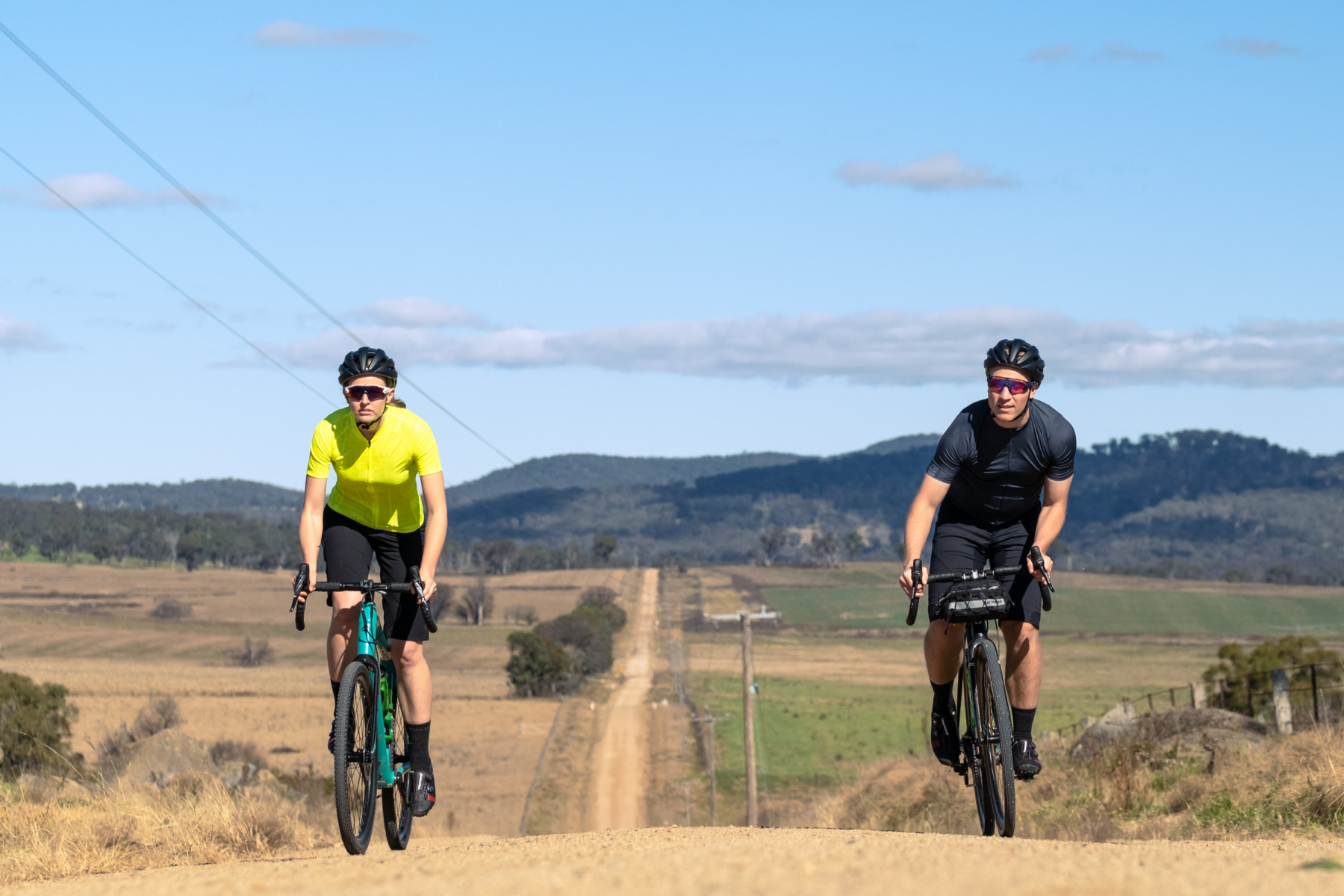
As part of the event, there are also photographers stationed along the course, and the photos are available free to riders as part of the entry fee.
One of the best things about gravel is going on an adventure with mates, and with that, if you come with a group there is a discounted rate.
Entries are open now. For more info or to sign up, head over to the goodnessgravel website.

